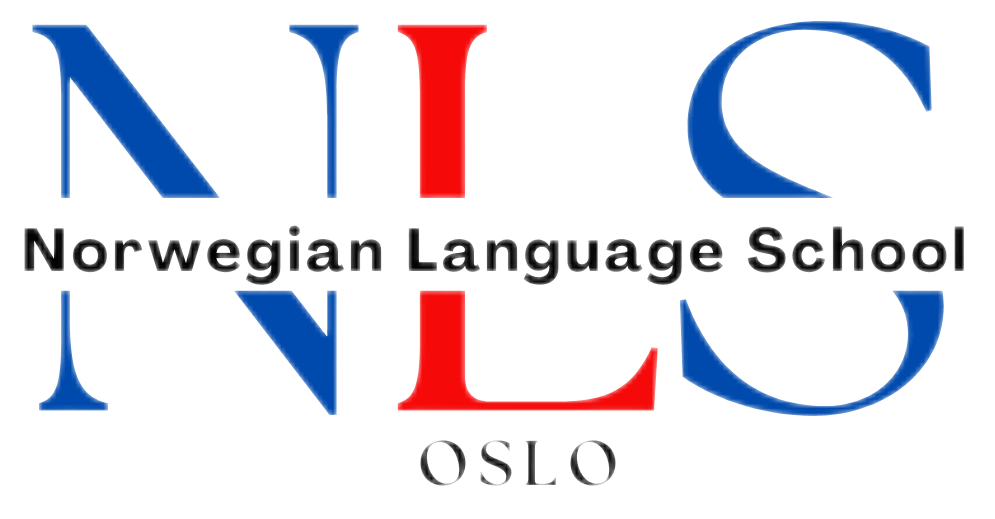

From Simple Melding to Everyday Narrative: Becoming an Effective Norwegian Writer at A1–A2
Table of Contents
ToggleIntroduction
Achieving competence in written Norwegian at the A1–A2 level often represents a learner’s first significant challenge in formal language assessments. For the Norskprøven, the written component requires clear, understandable texts on everyday topics, all within a framework of basic vocabulary and fundamental sentence patterns. Even though perfection is not expected, candidates must convey straightforward messages that, despite errors, remain largely understandable. This article aims to clarify the structure and requirements of the written exam at A1–A2, shed light on how examiners evaluate responses, offer strategies for effective study, and illustrate Norwegian-language examples for short messages, picture descriptions, and brief narratives. Since the purpose of the Norskprøven is to measure practical communication, these tasks mirror real-life contexts—such as writing simple notifications, describing what one sees, or sharing personal experiences. Throughout, the reader will find a wealth of advice on how to best prepare for this examination stage and improve one’s writing.
For learners seeking additional support, specialized courses exist. A structured preparation course can be particularly helpful if you prefer step-by-step guidance, feedback from qualified instructors, and targeted practice tasks. NLS Norwegian Language School offers one such course specifically designed to help participants refine their writing for the Norskprøven:
NLS Norwegian Language School – Norskprøven Course
What follows is a comprehensive look at A1–A2-level writing, including how the exam is organized, how each task is marked, and how to practice effectively, with Norwegian examples integrated to illustrate the style and scope typical of texts at these levels. This article is deliberately lengthy—over 2000 words—to ensure that it covers all angles of the A1–A2 writing experience thoroughly.
The Nature of A1–A2 Writing Tasks
On the Norskprøven at A1–A2, the writing component typically includes three tasks:
-
Write a short message (“Melding”)
-
Describe a picture (“Beskrive et bilde”)
-
Write about a familiar topic (“Fortell om et kjent tema”)
Although each prompt differs in context, the central focus remains the same: to test whether you can express relevant ideas in Norwegian so that a reader can follow your meaning. Errors are inevitable at this stage, yet examiners prioritize whether the intended message emerges from the text.
Task 1: Short Melding
Candidates usually need to produce a brief note that fulfills a straightforward communicative function, such as canceling an appointment, telling a friend they are delayed, or informing a colleague about a change in schedule. At A1, examiners tolerate many mistakes, but the note must be understandable. While no separate A2 criterion applies exclusively to this first task, performance here still factors into the overall language evaluation.
Task 2: Beskrive et bilde
Here, you see an image—perhaps of people shopping in a store, a scene at a café, or a family at home. You are asked to describe what is happening. At A1, you might only name a few objects or actions. At A2, you link short sentences together, ideally using words like “og” (and), “men” (but), “fordi” (because) to add a little coherence. The aim is to test both your vocabulary range for everyday items and your capacity to create intelligible statements about a visual context.
Task 3: Fortell om et kjent tema
This final assignment prompts you to share some personal or commonly known information—like describing your weekend routine, talking about a hobby, or explaining your morning schedule. A1-level writing here might simply present a few simple sentences, each describing an activity. A2-level candidates should do slightly more, connecting ideas in a minimal paragraph. The overall requirement is to remain understandable, even if grammatical mistakes occur.
Each of these tasks checks your ability to communicate in short bursts of Norwegian text. While advanced structures are not required, clarity and functional language use are essential.
Core Criteria for Evaluation
Examiners rate your A1–A2 writing on four principal dimensions:
-
Text Organization (Tekstoppbygging)
-
Spelling and Punctuation (Rettskriving og tegnsetting)
-
Vocabulary (Ordforråd)
-
Grammar (Grammatikk)
At A1, minimal standards apply. You can produce disjointed sentences, as long as some parts of your text are clear enough to guess your meaning. At A2, however, you must consistently demonstrate basic structural integrity: some correct spellings, some attempt at punctuation, a modest linking of ideas, and at least partial correctness in elementary grammar. Let us unpack these criteria further.
1) Text Organization
-
A1: No strict demands. A candidate might write short, isolated sentences without logical connectors. As long as the text still addresses the prompt, examiners accept it.
-
A2: A short text should have some internal connection. You might use “og” or “men,” and arrange statements in an order that feels natural, whether it is chronological or thematic.
2) Spelling and Punctuation
-
A1: Common words can appear spelled in a recognizable way, but examiners expect frequent errors. Simple punctuation might be missing, yet the text can still be read with some effort.
-
A2: Familiar words (like “skole,” “jobb,” “i dag,” “familie”) should often be spelled correctly. You should also display at least some correct usage of periods and capital letters.
3) Vocabulary
-
A1: Candidates work with a severely limited repertoire. Even so, they must choose basic words effectively enough to convey meaning.
-
A2: Enough everyday words should be at your disposal to address immediate personal topics: your home life, your job, your daily activities, or a simple anecdote.
4) Grammar
-
A1: A few correct uses of basic sentence patterns are enough—like “Jeg har en katt” or “Vi spiser middag.” Mistakes abound, but you show you can produce occasional correct forms.
-
A2: The text should illustrate repeated instances of correct usage of fundamental grammar, though numerous errors still appear. The essential point is that, across the tasks, your message emerges understandably.
To earn an overall A2 rating, you must achieve the A2 standard in every category—text organization, spelling/punctuation, vocabulary, and grammar—within the totality of your writing.
Examples in Norwegian for Each Task
Below are short samples of how an A1-level response might look compared to an A2-level one. These examples provide a sense of the length, complexity, and clarity expected.
Task 1: Melding
A1 Example
“Hei Anna! Jeg er syk i dag. Jeg kan ikke komme. Beklager. Hilsen Amir.”
Although it is very short, the statement is largely understandable: the writer is sick, cannot come, and expresses regret.
A2 Example
“Hei Anna! Jeg beklager, men jeg er syk i dag og må holde sengen. Derfor kan jeg ikke bli med på møtet i formiddag. Håper det går bra uten meg. Hilsen Amir.”
Here, the A2-level text provides slightly more detail and attempts to use connectors such as “derfor” to join ideas. Errors might still appear, but clarity is enhanced.
Task 2: Beskrive et bilde
Imagine a picture featuring three people cooking together in a kitchen.
A1 Example
“Jeg ser tre personer på et kjøkken. De lager mat. De har grønnsaker og kjøtt. De ser glade ut.”
This set of sentences is functional, but quite disjointed. A1-level examiners focus on whether these short statements match the picture and are somewhat intelligible.
A2 Example
“På bildet ser jeg tre personer på et kjøkken. To voksne snakker sammen, og de kutter grønnsaker på en benk. En ung jente holder en kjele og smiler. Kanskje lager de middag sammen, og det virker hyggelig.”
The A2 response includes linking words (“og,” “kanskje”) plus a bit of speculation, illustrating an attempt at more fluid writing.
Task 3: Fortell om et kjent tema
Consider describing your morning routine.
A1 Example
“Jeg står opp klokka sju. Jeg dusjer og spiser frokost. Så går jeg til skolen. Etter skolen drar jeg hjem.”
It is enough at A1 if the examiner sees that you can form short statements about daily life. Mistakes can occur, but the meaning must be reasonably clear.
A2 Example
“Jeg pleier å stå opp klokka sju hver morgen. Da tar jeg en rask dusj og spiser frokost, som vanligvis er brødskiver med ost og et glass melk. Klokka åtte går jeg til bussholdeplassen og reiser til skolen. Det er litt stress av og til, men jeg liker hverdagsrutinen min.”
This is more descriptive, with slightly expanded vocabulary and some logical connectors.
Practical Tips for Preparation
1) Read Simple Norwegian Texts
Consistent reading (e.g., short news items aimed at language learners, children’s books, or basic articles) helps you absorb spelling conventions, word usage, and typical sentence order.
2) Write Briefly Every Day
Over time, daily writing builds comfort with generating Norwegian sentences. Even scribbling a few lines about your day—like a small diary entry—develops your sense of expression and highlights recurring errors.
3) Focus on Basic Correctness
At A1–A2, aim for coherent but short sentences. Do not force complex grammar if you remain unsure about simpler patterns. A thoroughly correct simple sentence is more beneficial than a flawed complicated one.
4) Use Connectors
Words like “og,” “men,” “så,” “fordi,” and “når” make writing at the A2 level smoother. Even a small attempt at linking ideas shows examiners you are aiming beyond a pure word list.
5) Pay Attention to Core Words
Common daily words such as “frokost,” “jobb,” “familie,” “venner,” “trening,” and “handle” appear frequently in tasks. Learn both their spelling and usage thoroughly.
6) Practice Time Management
Although the tasks are short, do not spend too long perfecting one text and neglect the others. Plan your total writing time so you can address each prompt adequately.
7) Seek Feedback
If possible, ask a native speaker or a teacher to review your writing. Knowing which errors you repeat helps you target them. For those wanting structured lessons, an organized course can be invaluable:
NLS Norwegian Language School – Norskprøven Course
Common Pitfalls to Avoid
-
Irrelevant Responses: Always ensure you respond exactly to what the prompt instructs. If asked to describe a picture of a bus station, do not talk about your favorite food.
-
Neglecting Simple Punctuation: Even at A2, at least mark full stops and capital letters for new sentences.
-
Overusing Translation from Native Language: Norwegian has its own word order rules. Direct translations can result in confusion or incomplete statements.
-
Writing Extremely Little: The examiner cannot assess your level if you only produce one or two very short lines.
-
Forgetting to Proofread: A quick glance can help you catch glaring mistakes, especially if you wrote in haste.
Recommendations for Exam Day
When the day arrives to take the Norskprøven, keep these pointers in mind:
-
Read the Instructions Carefully: Confirm whether the prompt wants a short note, a description, or a narrative.
-
Compose a Mental Outline: Before writing, think briefly about what key words or phrases you want to use.
-
Monitor Time: Aim for a balanced approach so each task is answered.
-
Write Enough to Demonstrate Ability: A1–A2 texts are short, but do not be too brief—examiners need enough language to evaluate your skill.
-
Check for Obvious Errors: If time permits, quickly scan for mistakes in common words like “ikke,” “og,” or frequent verbs you might have spelled incorrectly.
Final Thoughts
Mastering the basics of Norwegian writing at A1–A2 can be both exciting and daunting. The tasks—writing a short melding, describing a picture, and narrating something simple—reflect real-life communication needs, which is why the Norskprøven emphasizes them. Your main objectives revolve around clarity, fundamental correctness, and directness in language use. While examiners do not expect advanced grammar or an extensive vocabulary at this stage, they do look for minimal coherence, partial control of verb forms, and an ability to be understood.
If you practice regularly, focus on simple correctness, read easy Norwegian texts, and perhaps get professional feedback, you will likely see tangible improvements in your writing speed, accuracy, and clarity. Over time, these improvements set a strong foundation for higher-level learning, whether your ultimate ambition is to progress to B1, B2, or beyond.
NLS Norwegian Language School – Norskprøven Course
For anyone determined to pass the Norskprøven at A1–A2, consistent practice and practical strategies remain your best allies. Use the examples shown here as a guideline. Keep your sentences simple yet correct, rely on everyday vocabulary, and do not forget that even a short text can demonstrate your ability to communicate effectively in Norwegian.
If you want to learn Norwegian, you can register for classes here. We look forward to hearing from you and helping you become fluent in Norwegian.





